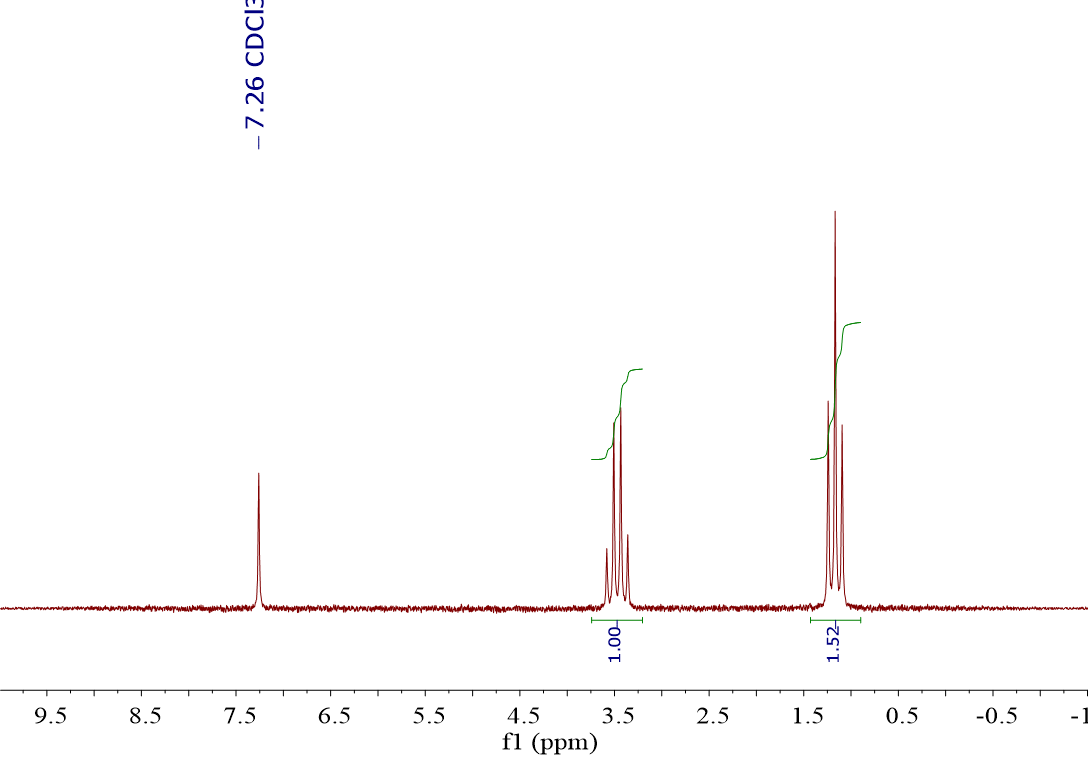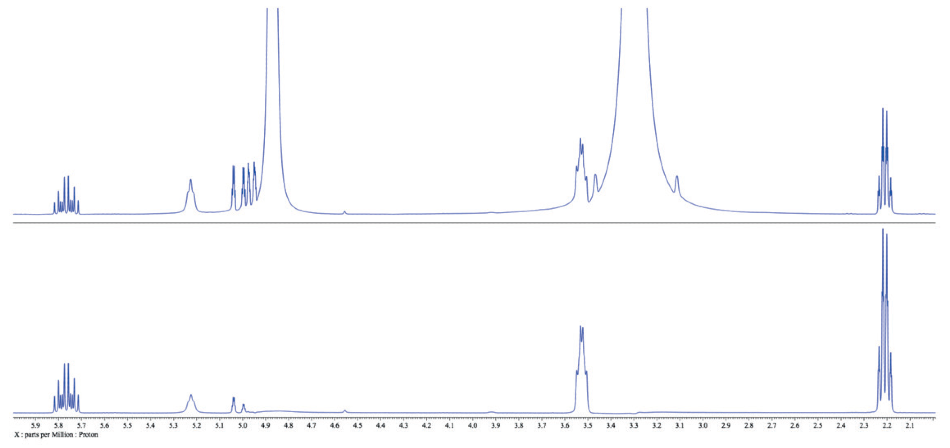

The hydrogen on the -OH group transfers to one of the lone pairs on the oxygen of the water molecule. All alcohols, such as ethanol, are very, very slightly acidic. The reason for the loss of the peak lies in the interaction between the deuterium oxide and the alcohol. If you measure an NMR spectrum for an alcohol like ethanol, and then add a few drops of deuterium oxide, D 2O, to the solution, allow it to settle and then re-measure the spectrum, the -OH peak disappears! By comparing the two spectra, you can tell immediately which peak was due to the -OH group. Since C-H bonds don't hydrogen bond very well, you don't see that phenomenon in an ether, and an O-H peak is very easy to distinguish in the IR spectrum. Instead of seeing one sharp peak, you see a whole lot of them all smeared out into one broad blob.

Because protons are shared to varying extent with neighboring oxygens, the covalent O-H bonds in a sample of alcohol all vibrate at slightly different frequencies and show up at slightly different positions in the IR spectrum. The rounded shape of most O-H stretching modes occurs because of hydrogen bonding between different hydroxy groups. Peak shapes are sometimes very useful in recognizing what kind of bond is present. Source: SDBSWeb : (National Institute of Advanced Industrial Science and Technology of Japan, 14 July 2008) O-H peaks are usually very broad like this one.įigure IR8.

If you look at an IR spectrum of 1-butanol, you will see:


 0 kommentar(er)
0 kommentar(er)
